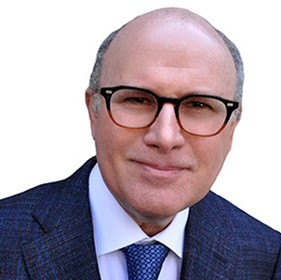 |
| By Jon Markman |
The era of the “robotaxi” is coming … and it will change everything.
Don’t snicker. This is going to be transformational because it makes so much sense.
Elon Musk announced Friday that Tesla (TSLA) will unveil its long-anticipated robotaxi in August. Musk has a huge advantage over competitors, and there’s a very obvious reason he is going to win.
Like many visionaries, Musk is a minimalist. He innovates by eliminating complexity, removing processes.
Tesla vehicles don’t have a million sensors to facilitate the path to autonomous driving. There are no expensive light radar systems or lasers for digital mapping. Like humans, Teslas have “eyes,” which are high-definition cameras located behind the windshield, in the front fenders, A-pillars and beneath the trunk lid.
Using this 360-degree field of view, and with software constantly enhanced by artificial intelligence, Teslas are learning to drive.
AI computer vision software eliminates the hurdles to autonomous vehicles in the same way that semiconductor innovation during the 1990s removed the barriers to wireless phone adoption.
During the late 1980s, only wealthy businesspeople had mobile devices. The phones were endlessly ridiculed for their bulk and cost. And even as prices and form factor sizes began to drop, critics argued that the market beyond greedy businesspeople was limited to doctors and drug dealers.
Few had the foresight to imagine that only 30 years later, nearly every man, woman and child in the developed world would own a smartphone … and a monthly wireless plan.

This brings me to my main point — the way we are currently doing transportation is not smart. It’s wasteful. It will be disrupted.
Most vehicles sit parked 95% of the time. We buy a vehicle and pay thousands for its maintenance, insurance and fuel. We drive to work or school during the week, and then the vehicle sits parked until we drive back home, where it’s parked again until the next day. We drive to the mall, grocery store or an outing during weekends, and then drive back home and once again, the car sits parked.
The actual cost of ownership is crazy, yet many families have multiple vehicles parked in their driveways, unused.
Robotaxi fleets solve this utilization problem.
In August 2023, the California Public Utilities Commission allowed autonomous vehicles to carry passengers without restrictions in San Francisco. Robotaxi operators affiliated with General Motors (GM), Alphabet (GOOGL) and later Amazon.com (AMZN) quickly readied operations.
Sensor-laden vehicles took to the streets on carefully mapped routes from Cruise Automation, Waymo and Zoox, respectively.
Executives at Waymo claim the costs, availability and safety of robotaxis will eventually outweigh the utility of car ownership.
Like cell phones in the 1990s, they are betting technology will improve quickly, and consumers will realize they can’t live without on-demand, cost-effective and safe robotaxis.
The problem at Waymo, and with other robotaxi hopefuls, is they are on the wrong track … literally:
- The entire industry is building fleets of robots to carry human passengers …
- These obscenely expensive machines with need to be paired with the environment …
- They require extensive 3D digital maps for their software inputs …
- Then the robots must spend months understanding the dynamics of city traffic, pedestrians and bicyclists …
- And they have to do this for EVERY city, village and town where they will operate!
The scale of the problem is overwhelming. There are too many processes.
Teslas require no further processes than the vehicles that are currently in operation.
The Austin, Texas-based company announced in March that a free trial will begin rolling out to Tesla buyers in the United States. These Teslas — and others in the global fleet — are learning to drive like humans … by using vision. The opportunity straight ahead is gargantuan.
Analysts at McKinsey & Company estimate that the market for mobility-as-a-service, or MaaS, will generate as much as $1 trillion in consumer spending by 2030, according a report published in 2023.

The elephant in the room is Elon Musk.
Musk is provocative and controversial. Yet his contribution to disruptive technologies is undeniable.
Tesla changed the trajectory in 2010 for mainstream vehicle propulsion. Every major automotive company is working toward electrification.
SpaceX, his rocket company, disrupted the sector with reusable rockets. NBC News reported that the cost of getting payloads to space is falling by a factor of 25 from the space shuttle days.
And Neuralink, a Musk-funded company, is having success with surgically implanted brain computers to help patients with paralysis control devices with their minds.
Musk’s robotaxi venture is going to be ridiculed. This was true for EVs, rockets that land vertically on drone ships at sea and brain-controlled interfaces.
Near-sighted critics are going to say robotaxis will never be safe … and that real the market for MaaS is tiny.
Don’t listen to the naysayers. Pessimists made the same arguments about early cell phones.
If you can look beyond the ridicule, Tesla is the way to play this robotaxi revolution.
All the best,
Jon D. Markman
P.S. Crypto was the same way at its genesis. Ridicule and wild speculation followed digital currencies for more than a decade. But those who could look past that to the opportunity are laughing all the way to the bank.
Of course, the biggest money yet to be made isn’t in Bitcoin or even Ethereum. It’s in what my colleague Juan Villaverde calls “new crypto wonders.” Check them out here.

